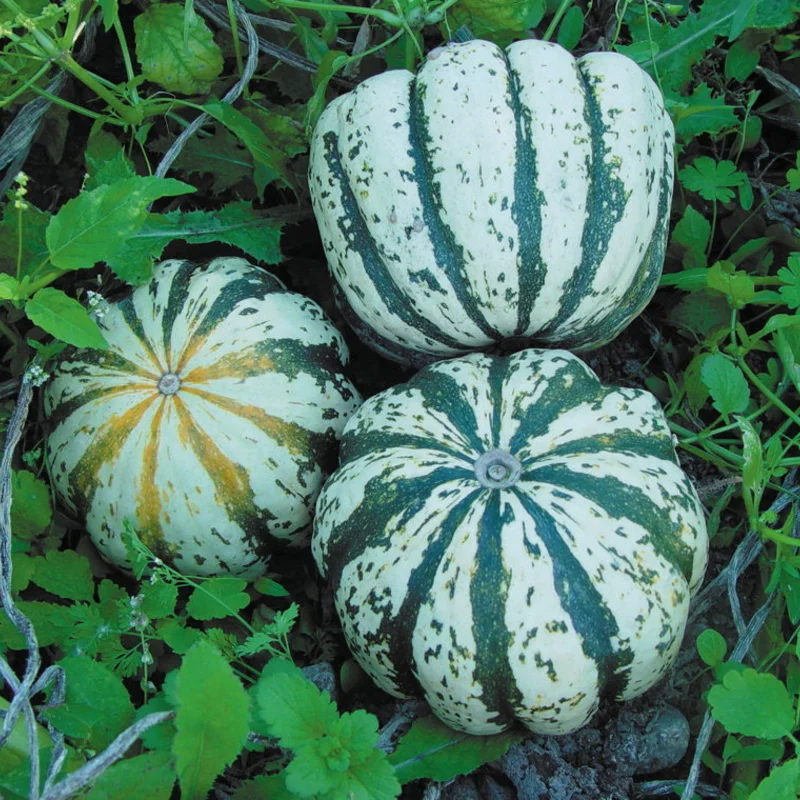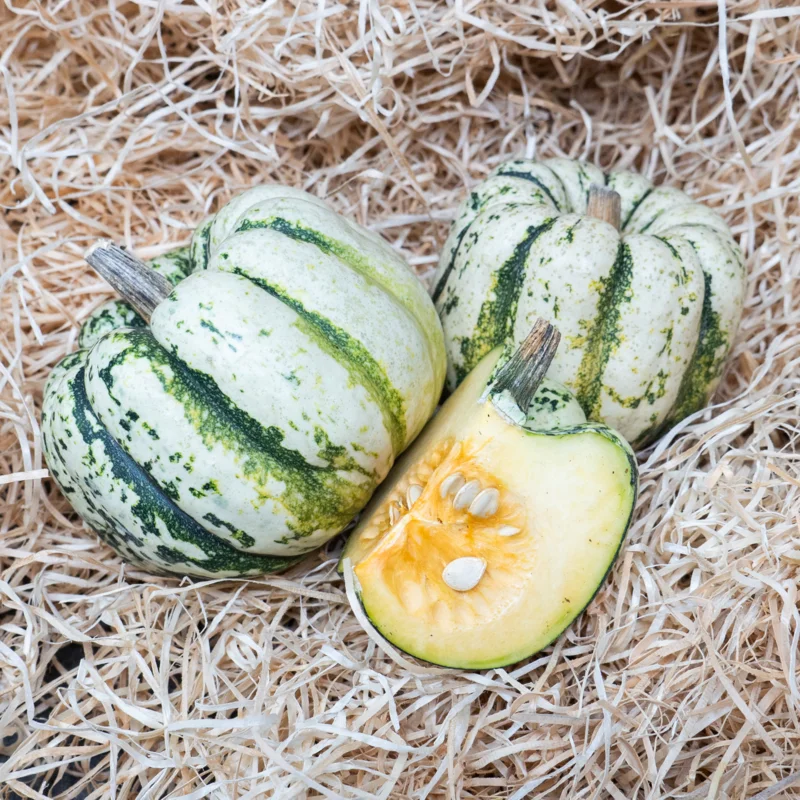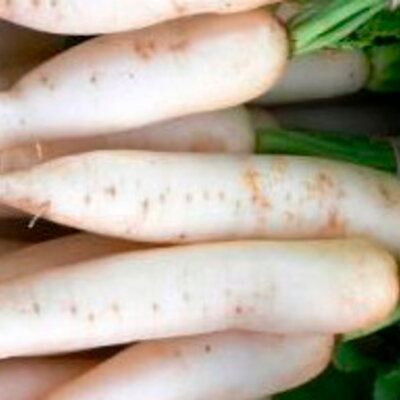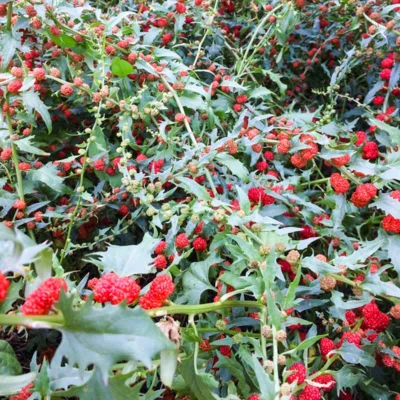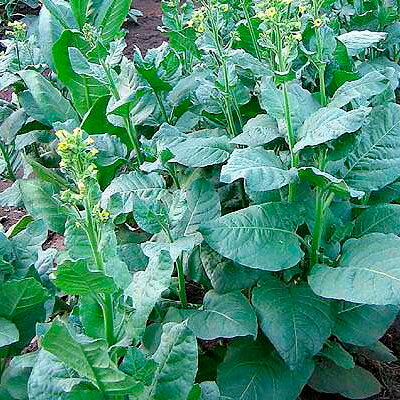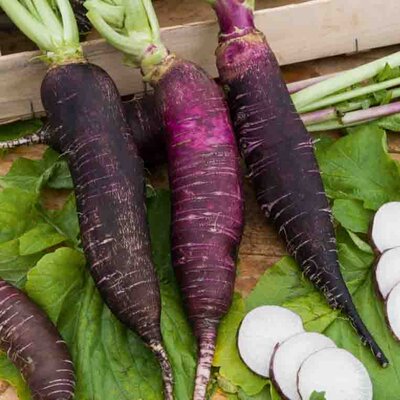Sweet Dumpling - Pepo squash
Sweet Dumpling is a variety that produces 4 to 10 fruits weighing 300 to 800 g, ivory in color with green stripes. Their firm, yellow-orange flesh has a chestnut and hazelnut flavor. They keep for 3 to 6 months.
Characteristics of Sweet Dumpling squash
Sweet Dumpling squash, Cucurbita pepo, is a highly decorative vegetable plant native to the United States. Also known as Patidou squash, this runner variety produces 4 to 10 ribbed fruits, 15 to 25 cm in diameter and weighing up to 800 g, with ivory skin streaked with green. Their firm, sweet, orange-yellow flesh is reminiscent of chestnuts and hazelnuts. Enjoy them raw, grated into salads, or cooked in purées, soups, gratins or stuffed in the oven. Squash flowers are also edible.
Successful Sweet Dumpling seedlings
Sweet Dumpling squash is sown from March to May, 2 to 3 weeks before transplanting, in pots of 2 to 3 seeds.
Place seedlings under a light shelter, at a temperature of between 18 and 20°C, and keep the substrate moist until the seeds emerge. Be careful not to sow squash seeds too early in the season, in which case the roots will become fibrous, making growth difficult in the garden. Transplant into the vegetable garden once the last frosts have passed.
From April to June, after the last risk of frost, it is possible to sow the seeds directly in the garden in stacks of 2 to 3 seeds.
Prepare 2 weeks in advance holes filled with compost or organic matter, spaced 2 m apart in all directions, to accommodate the squash plants or seeds. Mulch the soil to maintain sufficient humidity and limit water evaporation.
Next to the squash, we recommend sowing corn and beans, giving rise to the "three sisters" or milpa crop. Basil plants can also be planted to repel pests.
Patidou squash harvesting
Although Patidou squash fruits can be harvested and eaten immaturely, those intended for winter storage should be picked as late as possible, before the first frosts, from July to November, when the stalk begins to dry out and the skin becomes thick. Be careful not to tear them off, but cut as close as possible to the stem, 10 cm above the stalk.
Patidou squash can be stored all winter in a dry, well-ventilated place, at a temperature of between 10 and 12°C. Place the fruit, spaced apart and tail up, in crates set high up. They can also be frozen, after slicing and cooking, to keep for up to a year.
Patidou squash recipes
Beneath its attractively striped skin, Patidou squash stands out for its pronounced taste of chestnut and hazelnut. Its orange, slightly sweet flesh has given life to many recipes. Grated raw in salads, it goes perfectly with carrots and avocados. Cooked, it can be prepared in soups, purées, tarts or gratins, but it reveals all its potential in an egg casserole or stuffed in the oven.
These products may also be of interest to you
in the ground, in bucket
Sow in pots at 18-20°C, 2 to 3 weeks before planting. Transplant with the root ball into the ground, after the last frosts, at a minimum distance of 2 m in all directions. To sow directly in the ground, sow after the last frosts, once the soil has warmed up. In both cases, prepare holes filled with compost or organic matter two weeks in advance to accommodate your seedlings or seeds.
March, April, May
April, May, June
June, July, August, September, October, November
in the ground
sunny
fort
humus
drained, rich
Cucurbita pepo
mid-season
From 300 to 800 g
12 seeds
ribbed
farm
Green, White
edible
From 150 to 400 cm
From 15 to 25 cm
runner
United States
This variety, originally from the United States, is also known as "Patidou".



